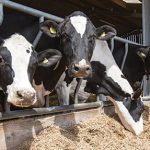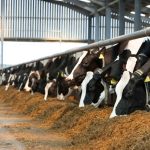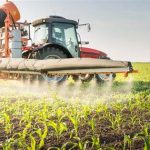Cattle Feed Supplements in India

Cattle Feed Supplements in India – Cattle supplement and feed additives are ingredients or a mix of ingredients added to the basal feed micro quantities. Feed additives are ingredients or combinations of ingredients added to the basal feed micro quantities for the aim of improving the speed of gain, feed efficiency, or preventing and controlling diseases. Every cattle farmer cares about the overall health of their livestock permanently reason. There are innumerable threats to the health of an outsized group of animals. Here we’ve listed a number of the favored Cattle Feed Supplements in India.
Nutritional feed supplements involves yeast supplements and essential minerals, including the following:
- Calcium
- Phosphorous
- Vitamin A
- Selenium
- Vitamin D
- Vitamin E
- Magnesium
Guaranteeing animals that have excellent diets may want feed supplementation when feeding quality is poor – including some particularly -designed licks that bypass wastage in wet climate. Feed supplements are phosphate, calcium, and trace mineral mixtures which can tend to graze animals during the dry or season. They supplement grazing when it’s deficient in minerals and trace minerals.
Minerals and vitamins account for a very diminutive dimension of everyday dry substance consumption in beef diets and should occasionally be overlooked completely a herd nutritional assistance. Although minerals and vitamins are required as a very small portion of dietary nutrients, they’re indispensable in beef nutritional arrangements for individual animal function, such as bone development, protected function, muscle compressions, and nervous system function.
Table of Contents
Top List of Cattle Feed Supplements in India:
Here during this blog, we share cattle feed supplements. Several veterinary drugs have quite one name and, consequently, an equivalent drug could also be listed quite once
Calcium and Phosphorus:
Calcium and phosphorus are the most mineral components of the skeleton. Ninety-nine percent of whole-body calcium and 80 percent of total body phosphorus is filed inside the osseins. The skeletal properties of calcium and phosphorus are utilized to meet short-term dietary deficiencies. Long-term wants of either can cause bones to crumble and even crack. Calcium and phosphorus also play prominent roles in other bodily capacities.
A reduction in either or both can cause a lessening in weight gain and/or a reduction in performance of gain. During lactation, low amounts of either will reduce milk production. A superior milking cow requires 3 times more calcium than a non-lactating cow. A phosphorus deficiency can delay puberty in heifers and may delay mature beef cows from returning to heat following parturition. Cattle additionally require accurate substances of calcium for the nervous and muscular systems to operate correctly.
Sodium and Chlorine:
Sodium and chloride (salt) provides for the right function of the nervous and muscular systems. it’s commonly deficient in diets, but chlorine levels are usually adequate. Both minerals are present in soft tissues and fluids and there’s little or no storage of those elements, so a continuing, daily source of sodium and chlorine must be provided. Cattle will intentionally utilize more salt if forage is young and succulent than when it grows.
Magnesium:
Magnesium is important for correct enzyme and systema nervosum function and efficient carbohydrate metabolism. A magnesium deficiency is rare apart from cows grazing lush-growth fescue or small grain pastures during the late winter and early spring, which can cause grass tetany, a significant and sometimes fatal disorder. Grass tetany can usually be prevented by feeding cattle a mineral mixture containing periclase. A mineral compound comprising 10 to 14 percent magnesium applied at 4 ounces per day should implement sufficient magnesium.
Potassium:
Potassium functions in acid-base equilibrium, pressure, and therefore the amount of water retained within the body. Grasses, particularly early lush spring growth, contain adequate amounts of potassium for grazing cattle, and supplementation is never needed. However, potassium may infrequently below in stockpiled forages or grass that was dropped on ere baling because potassium is water-soluble and can leach from the forage.
Sulfur:
Sulfur may be a part of the essential amino acids methionine and cystine, which structure protein. A sulfur deficiency in beef diets isn’t likely to occur under normal feeding conditions. Sulfur is more likely to be in excess, which may interfere with the metabolism of copper, leading to a copper deficiency. Also, excess sulfur can reduce feed intake and cause a brain lesion condition referred to as polioencephalomalacia (PEM).
Cobalt:
Cobalt functions as a component of vitamin B-12, which is synthesized within the rumen by bacteria. The first deficiency symptom is loss of appetite and poor growth. Most forages within the Southeast have adequate levels of cobalt; however, it’s usually added within the mineral mix at approximately 10 ppm to make sure no deficiencies.
Copper:
Copper is that the commonest micromineral deficiency in grazing cattle. This is often a crucial component of the many enzyme systems essential for normal growth and development. Deficiency manifestations involve reduced fertility, discouraged immunity, and reduced pigmentation of hair (black hair changes to red). Dietary deficiencies can transpire, but most deficiencies are produced by the destruction of competitors, which diminishes copper absorption.
Iodine:
Iodine is an important mineral for the function of the thyroid hormones that regulate energy metabolism. The primary sign of iodine deficiency is goiter in newborn calves. Iodine is never deficient in cow herds within the Southeast. Iodine is typically supplemented as ethylenediamine dihydride (EDDI). the utmost legal supplementation of EDDI is 50 mg per head per day.
Manganese:
Manganese deficiency is rare and unlikely to be a drag in grazing cattle in Georgia. It’s the foremost common sort of manganese utilized in mineral mixes. Corn-based diets are low in manganese and supplementation is important when feeding these diets.
Selenium:
Selenium is often deficient in some areas of Georgia. Its deficiency causes white muscle disease (similar to muscular dystrophy) in newborn calves. Selenium deficiency also can produce mavericks to be weak at birth and improve their awareness of adolescent diseases like scours. Increased rates of retained placentas and poor reproductive performance are often observed in cows with selenium deficiencies.
Zinc:
Zinc is marginal to deficient in most Georgia forages. It’s a component of the many enzymes and is vital for immunity, male reproduction, and skin and hoof health. Cattle have a limited ability to store zinc and supplementation is usually necessary.
Vitamins:
Vitamins are closely linked to mineral metabolism and absorption. Vitamin A helps skin and mucous laminae stay healthy. Vitamin A conditions normally are met by munching fresh, green, growing grass. Oxidation deteriorates vitamin A during storage, so diets supported stored feeds should be supplemented with vitamin A . Supplement diets with vitamin A any time the main portion is stored feeds.
Conclusion:
May this list is helpful for your searches. If you want to invest in this domain, please contact us or fill the contact form from our official website.




